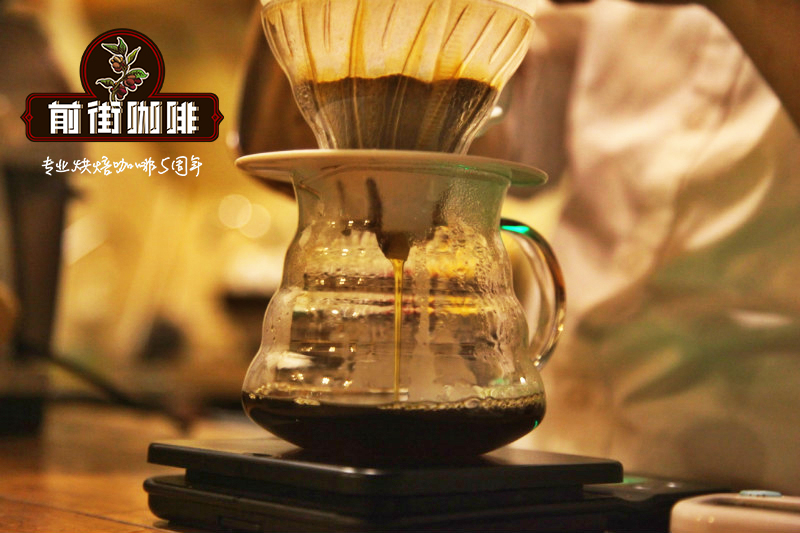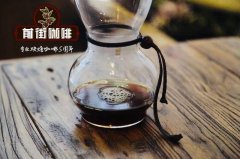From a chemical and physical point of view-coffee should be so strong!

Professional coffee knowledge exchange more coffee bean information please follow the coffee workshop (Wechat official account cafe_style)
Coffee is not only for modern people to refresh themselves, but more importantly, whether at home or in the office, a cup of coffee can relax tired nerves and enjoy a moment of leisure. Many people are not satisfied with buying take-away coffee, but also buy coffee beans and bean grinders, hoping to make a unique coffee, but they always find it a little less interesting. In order to be able to produce master-level coffee, Science report magazine brought in relevant experts and brought in a set of unique recipes for making coffee.
Pay attention to the acidity and basicity of water
Christopher Hunton, a professor of chemistry at the University of Oregon, known in the industry as "Mr. Coffee", has been a favorite in hedging coffee, analyzing how to brew a cup of coffee from a chemical and physical point of view. In his view, professional baristas make better coffee, which of course has something to do with their well-trained and skilled skills, but more importantly, they know more about the principles of chemistry and physics, and have more time to try different recipes.
First of all, since 98% of a cup of coffee comes from water, the most critical factor in determining whether this cup of coffee tastes good or not may be the water quality that you have been ignoring. Most people know that water quality can be divided into "soft" and "hard", and the hardness of water refers to the content of salts dissolved in water, generally taking the content of calcium and magnesium salts as the standard, the greater the content, the greater the hardness. Generally speaking, the water released from the faucet is hard and tastes bad, and some hardness will be reduced after boiling. And like the pure water we usually drink, the hardness is almost zero.
Hunton found that magnesium in general hard water is particularly sticky, and that if the water contains a lot of magnesium, it will give coffee a stronger flavor and higher caffeine. At the same time, hard water also contains more carbonate, which may also be the source of coffee with a more bitter taste. In contrast, soft water often contains a lot of sodium, but it is not sticky, which means that coffee brewed with "hard water" will taste stronger if you use "hard water" instead of "soft water" to brew exactly the same beans. So Professor Hunton said that distilled water or pure water is not recommended to brew coffee, because the coffee produced by this kind of water tends to taste dull and lack a sense of hierarchy.
In order to satisfy people's perfectionist mentality of making coffee, some people also came up with the idea of water, and the United States launched a kind of water specially used to make coffee. However, in Professor Hunton's view, there is no need to focus on which kind of water is more suitable, because personal preferences are different. People who like the smooth taste and sour taste of coffee can use soft water to brew coffee, and the aroma of beans will be more obvious when brewing. People who like the bitterness of coffee usually prefer to brew it in hard water, so the coffee will be more "heavy".
The storage temperature of coffee beans will affect
In order to study the effect of coffee beans, the protagonist of a delicious cup of coffee, Professor Hunton's team also worked with local cafes to study the effect of temperature on coffee storage.
The researchers placed coffee beans in an environment ranging from room temperature to-196 ℃. After several groups of controlled experiments, they found that coffee beans in a lower temperature environment would have smaller and more uniform coffee particles when using the same grinder, which directly made the extraction more sufficient. The conclusion of the effect of low temperature has also caused a sensation in the coffee industry.
Specifically, the researchers cooled coffee beans in three different ways: frozen (- 19 ℃), dry ice (- 79 ℃) and liquid nitrogen (- 196 ℃). The results showed that the taste of the three cooling methods was better than that of room temperature coffee beans, and the coffee beans with the lowest temperature performed best. "the performance of coffee beans was inversely proportional to temperature, and the coffee beans stored between room temperature and-19 ℃ had the greatest difference."
The researchers explained that freezing the coffee before grinding can make the coffee powder more uniform and the particles more closely arranged, so that the coffee flavor is more fully extracted and the coffee will become more delicious. At the same time, the researchers also said that in addition to being more mellow, another windfall is that frozen coffee beans are more utilized and fewer beans are needed for a cup of coffee. "the quality of refrigerated coffee is better because the lower the temperature, the smaller the intermolecular gap and the more orderly the arrangement, so in the brewing process, when using the same amount of coffee, you can extract more flavor." Professor Hunton said.
The grinding mode of bean grinder should be adjusted.
With the perfect coffee beans, the next step is the bean grinder. After grinding with different bean grinders, the structure of the powder is completely different. Through grinding, it can be observed that the powder structure and shape of different knife shapes are completely different. The structure of powder particles is related to whether the extraction is uniform or not, which will affect the flavor of coffee.
The propeller type bean grinder is rejected by many people because the coffee powder it grinds is uneven. If there are conditions, it is best to choose a plate type bean grinder. Two parallel gears grind each other, and the coffee powder is evenly ground.
As for how fine it should be ground, there has always been a debate. The researchers believe that a balance should be struck. Because the finer the coffee beans are ground, the more they can maximize the surface area of the particles in contact with water to extract the best coffee flavor, but at the same time, grinding too fine will also lead to easier agglomeration of coffee powder when brewing coffee powder, which is not conducive to brewing. And if the coffee beans are ground too fine, excessive extraction will give off astringent taste, which may also damage the taste. So this degree may have to be adjusted slowly according to your own taste.
The combination of coffee and water has its advantages and disadvantages.
The last step is to combine the ground coffee powder and water perfectly.
In the way of brewing, it is divided into two camps, one is to soak all the coffee powder into the water to extract, that is, the "soaking type", and the other is to let the water flow through the coffee powder, that is, the "filter type".
Generally speaking, the soaking type has a lower extraction efficiency, but it can be more convenient and just right to achieve the extraction purpose, so that the taste of the brewed coffee is more balanced, there will not be too many accidents, and it is safer.
The coffee brewed by filtration is more complicated. The time of soaking can be controlled, while the extraction time of filtration depends on the thickness of coffee powder, because it directly affects the speed of water flow. Therefore, the filter overall extraction efficiency is high, the taste is more prominent, giving users more room for change, but at the same time, it is easy to have a large deviation between the two cups of coffee, making baristas lose their footing.
In addition, the ratio of coffee to water is also very important. The finer the coffee powder, the more fully extracted, but the speed at which the water flows will be slower accordingly. If you reduce the amount of coffee at this time, the extraction time will also be shorter than before. In other words, filtered coffee is a chain reaction with more and more complex variables.
Important Notice :
前街咖啡 FrontStreet Coffee has moved to new addredd:
FrontStreet Coffee Address: 315,Donghua East Road,GuangZhou
Tel:020 38364473
- Prev

Drinking coffee is not healthy? What is the effect of coffee on the body?
Professional coffee knowledge exchange more coffee bean information Please pay attention to the coffee workshop (Wechat official account cafe_style) Coffee, as early as 2500 years ago in Arabia began to grow and as a drink, introduced into Yemen in the 9th century, introduced to Europe and Asia in the 15th century, and then introduced to America, popular all over the world, now coffee has become one of the three major drinks in the world. And today, when China has experienced rapid development,
- Next

Why roast coffee for the purpose of roasting? The principle of coffee roasting
Professional coffee knowledge exchange more coffee bean information please follow the coffee workshop (Wechat official account cafe_style) "one pot, two beans, three roasting." In this sentence, the factors that affect the roasting of coffee are pointed out. Pot refers to the machine used to bake coffee. The stability and controllability of the bean baking machine are related to the replicability of the flavor. In other words, occasional high-quality baking
Related
- Beginners will see the "Coffee pull flower" guide!
- What is the difference between ice blog purified milk and ordinary milk coffee?
- Why is the Philippines the largest producer of crops in Liberia?
- For coffee extraction, should the fine powder be retained?
- How does extracted espresso fill pressed powder? How much strength does it take to press the powder?
- How to make jasmine cold extract coffee? Is the jasmine + latte good?
- Will this little toy really make the coffee taste better? How does Lily Drip affect coffee extraction?
- Will the action of slapping the filter cup also affect coffee extraction?
- What's the difference between powder-to-water ratio and powder-to-liquid ratio?
- What is the Ethiopian local species? What does it have to do with Heirloom native species?

